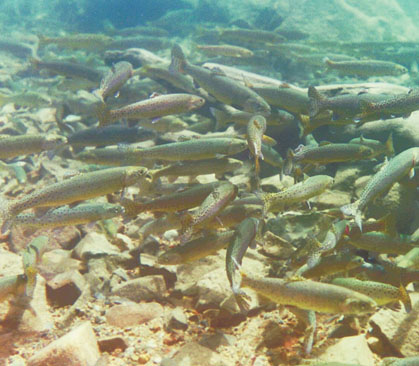All Issues
Food web changes documented in Lake Tahoe
Publication Information
California Agriculture 57(4):103-103.
Published October 01, 2003
PDF | Citation | Permissions
Full text
Dramatic food web changes have occurred as a result of the introduction of nonnative species into Lake Tahoe, according to a study by researchers at UC Davis and the University of Wisconsin, Madison.
The scientists documented important ecological changes in Lake Tahoe spanning the past 120 years. The researchers reconstructed the dietary niches of Lake Tahoe fishes dating back to 1872 by conducting stable isotope analysis of museum specimens and comparing them to fresh catches.
In particular, introduced lake trout (Salvelinus namaycush) and a freshwater shrimp (Mysis relicta) appear to have especially altered the food web, which may have implications for mounting efforts to restore populations of native Lahontan cutthroat trout (Oncorhynchus clarkii henshawi). Named for the distinctive red streak under its chin, this trout once topped the lake food chain at weights of 40 pounds. Due to overfishing, dam-building and habitat destruction, this species is now among the most endangered western salmonids and has been extinct in Lake Tahoe for 70 years. Some related but genetically distinct strains still live in lakes and streams outside of the Tahoe Basin.
At the 1997 Lake Tahoe Presidential Forum, then-President Bill Clinton and then-Interior Secretary Bruce Babbitt called for the Lahontan cutthroat trout to be restored to the Tahoe basin. For the past 2 years, the UC Davis/UW Madison research team has been collaborating with the U.S. Fish and Wildlife Service, assessing the current Lahontan cutthroat trout reintroduction efforts in Fallen Leaf Lake, a small lake located in the headwaters of Lake Tahoe.
“Fallen Leaf is turning out to be an ideal lake for Lahontan cutthroat trout reintroduction,” says Jake Vander Zanden of UW Madison. “Plus, we're learning valuable lessons that will ultimately be transferred to other systems.” The study was published in the April 2003 Ecosystems.





